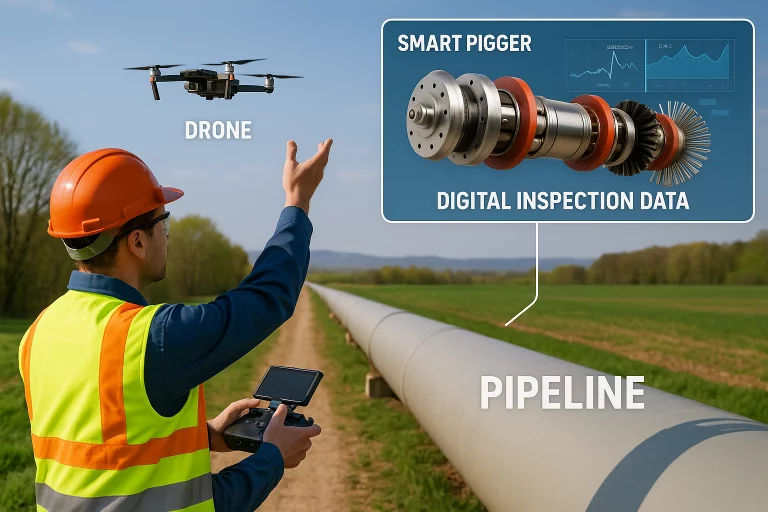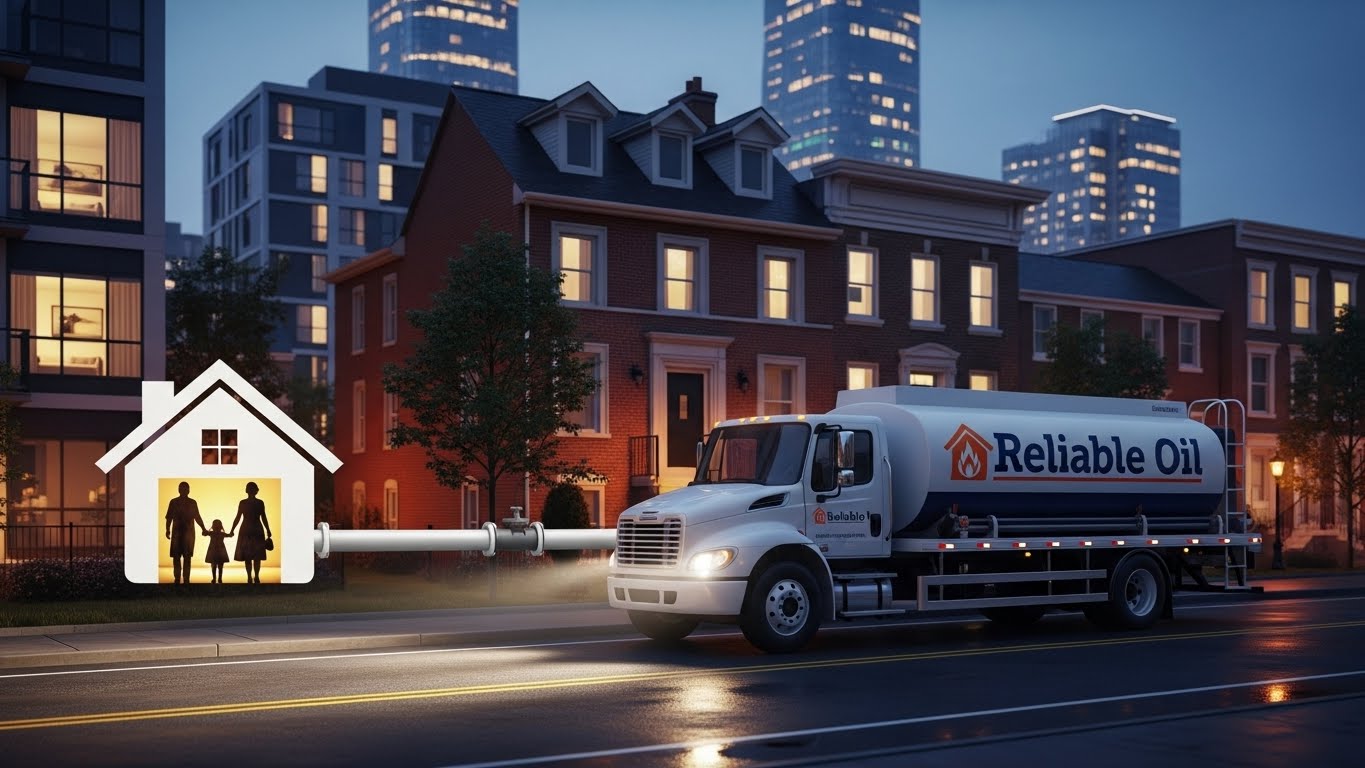Blog
Pipeline Maintenance: Best Practices for Cleaner, Safer Operations

Keeping pipelines in optimal condition ensures operational efficiency and environmental safety. Over time, debris, corrosion, and residue buildup can restrict flow, damage infrastructure, and increase the risk of leaks or failures. Routine inspections, monitoring systems, and proper cleaning schedules help mitigate these risks while extending the lifespan of pipeline systems.
Industries rely on established maintenance procedures to maintain smooth and safe operations. These procedures include pressure testing, corrosion control, and debris removal. Incorporating professional pipeline cleaning as part of a regular maintenance plan allows operators to identify potential issues early and maintain consistent flow rates. These practices not only support regulatory compliance but also reduce long-term repair costs and environmental impact. A proactive approach to maintenance helps ensure that pipeline systems remain reliable, efficient, and safe for continued use.
Regular Inspections and Monitoring
A practical inspection and monitoring program is crucial for maintaining pipelines and reducing risks. Traditional visual inspections and manual checks are no longer enough in today’s technological environment. The adoption of innovative pigging technology has become widespread. This advanced method uses sophisticated devices that travel inside pipelines to detect defects such as corrosion and cracks accurately. By identifying vulnerabilities early, operators can address these issues before they leak or rupture.
External monitoring has advanced with the use of drones and satellite surveillance. Drones with high-resolution cameras and sensors can efficiently inspect vast and remote areas, minimizing risks for human inspectors. Satellite technology offers ongoing monitoring and detects subtle changes that may indicate emerging issues. These innovative solutions streamline inspections, reduce hazards, and ensure pipeline networks remain secure and operational.
Implementing Preventive Maintenance Programs
Preventive maintenance is a strategic approach that addresses pipeline issues before they escalate, ensuring system integrity and prolonging asset life. Central to these programs are cathodic protection systems, which employ electrical currents to combat corrosion in metallic pipelines, thereby reducing leak risks. Scheduled cleaning, utilizing mechanical pigs and chemical treatments, is crucial for removing sediment and debris that can cause flow restrictions and internal corrosion.
Working with professionals ensures maintenance is carried out using effective technologies and following best safety practices. They provide specialized tools and knowledge, enhancing cleaning results while minimizing disruptions. Preventive programs also involve the timely replacement of compromised components identified during inspections. Maintenance schedules are based on manufacturer guidelines, real-time data, historical trends, and regulatory requirements, ensuring consistent attention throughout the pipeline lifecycle. These proactive measures help avoid costly repairs, mitigate liability risks, and improve reliability.
Training and Safety Protocols
Technology alone cannot ensure safe pipeline operations; skilled personnel are crucial for effective maintenance. Ongoing training programs are essential for all team members, covering areas like hazardous material handling, leak detection, emergency shutdowns, and incident communication.
In addition to traditional training, hands-on emergency drills are vital for fostering a culture of safety and readiness. These exercises provide practical experience for workers handling complex scenarios, improving their ability to act decisively under pressure. Effective communication between field staff, control rooms, and local emergency services is key for coordinated responses. Ultimately, the success of maintenance operations relies on the competence and preparedness of personnel, highlighting the need for continuous education and a strong safety culture.
Environmental Monitoring and Compliance
Pipeline operators must adhere to strict environmental regulations, emphasizing the need for compliance and real-time monitoring to safeguard ecosystems. Advanced monitoring equipment, including groundwater sensors and vapor detection systems, is installed along pipeline networks to check for contamination and leaks continuously. These systems send alerts, allowing operators to act swiftly and prevent environmental incidents.
Detailed recordkeeping is also crucial for compliance. Operators log inspections, maintenance, and incident responses, demonstrating regulatory adherence and fostering continuous improvement. Engaging with regulatory agencies and environmental groups enhances transparency and responsiveness to changing standards.
Utilizing Advanced Leak Detection Systems
Technological advancements have significantly improved leak detection in the industry, which is essential for minimizing environmental damage and operational losses. Modern pipelines now use advanced sensors, such as acoustic monitoring units and precision pressure and flow sensors, integrated into digital monitoring platforms for real-time data analysis. This allows for quick identification and localization of leaks or security breaches.
Rapid leak detection helps prevent spills, safeguarding water tables, wildlife, and communities. Early intervention through digital analytics reduces downtime, repair costs, and potential reputational damage from incidents. By investing in advanced detection technologies, pipeline operators demonstrate their commitment to innovation, safety, and environmental responsibility. For more information on leak detection systems, resources like Pipeline 101 are available.
Emergency Response Planning
Despite comprehensive maintenance strategies, pipeline failures can still occur, so a strong emergency response plan is essential for minimizing incident impacts. These plans outline roles, evacuation routes, containment procedures, and communication protocols with emergency services and the community. Regular reviews and training simulations help maintain their effectiveness. Key elements include rapid response team mobilization, clear authority lines, and efficient resource distribution, all aimed at reducing the scale and duration of incidents. Continuous improvement through after-action reviews ensures that emergency response efforts remain effective and trustworthy.
Blog
Hochre : A Comprehensive Guide for Beginners

Have you ever felt overwhelmed by the chaos of daily life? Perhaps you’ve searched for a way to find balance and inner peace. If so, Hochre might just be what you’re looking for. This ancient practice has been gaining popularity as more people seek holistic methods to improve their well-being. Whether you’re curious about its origins or eager to learn how it can enhance your life, this comprehensive guide will unravel everything you need to know about Hochre. Dive in and discover how this transformative journey can lead you toward mindfulness and clarity, one step at a time!
Understanding the History and Origins of Hochre
Hochre has deep roots that stretch back centuries. Its origins are often intertwined with various cultural rituals and practices, making it a fascinating subject of study.
Historically, Hochre emerged in ancient civilizations as a form of expression and connection. It was not just about individual practice but also served communal purposes. Communities would gather to experience its transformative power together.
As time progressed, different regions adapted Hochre to reflect their unique traditions. This evolution led to diverse styles and interpretations, enriching the practice further.
Scholars have traced links between Hochre and other spiritual disciplines. These connections highlight its significance beyond mere physical activity—it’s a holistic approach that encompasses mind, body, and spirit.
Today, people from all walks of life explore this practice for personal growth or spiritual fulfillment. The journey through its history continues to inspire newcomers eager to discover what Hochre has to offer.
The Benefits of Practicing Hochre
Practicing Hochre offers a myriad of benefits that can enhance both mental and physical well-being. One notable advantage is its ability to reduce stress levels. Engaging in this practice encourages mindfulness, allowing individuals to focus on the present moment.
Additionally, Hochre fosters creativity. The unique techniques involved stimulate the mind, helping practitioners think outside the box. This creative boost can translate into various aspects of life, from problem-solving at work to exploring artistic pursuits.
Improved flexibility and strength are also key benefits associated with regular Hochre practice. The movements promote better body awareness and coordination over time.
Furthermore, it cultivates a sense of community among practitioners. Joining classes or groups opens doors to new friendships and support networks that enrich personal growth journeys.
Different Styles and Techniques of Hochre
Hochre encompasses a variety of styles and techniques that cater to different preferences and goals. Each approach offers unique benefits, making it adaptable for practitioners.
One popular style is the meditative form, which focuses on mindfulness and inner peace. This technique encourages individuals to connect with their breath while visualizing serene landscapes.
Conversely, you have the expressive style that emphasizes movement and creativity. Practitioners often incorporate music or art to enhance their experience, allowing emotions to flow freely.
Another notable technique is the communal practice. Engaging in Hochre with a group fosters connection and shared energy, creating an uplifting atmosphere for all involved.
Regardless of the chosen method, each style provides tools for self-discovery and personal growth. Exploring these variations can lead practitioners towards finding what resonates most deeply within them.
Steps to Start Your Own Hochre Practice
Starting your own Hochre practice can be an exciting journey. Begin by creating a serene space that resonates with you. This could be a quiet corner of your room or even outdoors in nature.
Next, gather materials that inspire you. Consider journals, art supplies, or calming music to enhance your experience. These tools will help set the mood for your practice.
Set aside dedicated time each week to immerse yourself in Hochre activities. Consistency is key to developing skills and deepening understanding.
Explore different styles within Hochre as you experiment with techniques. Don’t hesitate to try new approaches; this will enrich your practice.
Consider connecting with others who share an interest in Hochre. Joining communities online or locally can provide support and inspiration along the way. Engaging discussions often spark creativity and motivation for newcomers.
How to Incorporate Hochre into Daily Life
Incorporating Hochre into your daily routine can be both simple and fulfilling. Start by setting aside a few minutes each morning for practice. Even five minutes of focused breathing or meditation can make a difference.
Consider integrating mindful moments throughout the day. Whether sipping tea or walking, use these times to reconnect with yourself. Pay attention to your surroundings; notice details you usually overlook.
Create prompts in your environment that remind you to practice Hochre principles. This could be sticky notes with affirmations on your mirror or calming visuals on your desk.
Engage with community resources, like local classes or online forums, which provide support and inspiration. Sharing experiences can enhance motivation and understanding.
Embrace flexibility in how you practice Hochre. Every individual’s journey is unique, so find what resonates with you personally while staying open to experimentation along the way.
Common Misconceptions about Hochre
Many people have misconceptions about Hochre that can deter them from exploring its benefits. One prevalent myth is that it’s only for the spiritually inclined. In reality, Hochre welcomes anyone, regardless of background or beliefs.
Another misunderstanding revolves around the idea that practicing Hochre requires extensive knowledge or training. The truth is, beginners can start with simple techniques and gradually deepen their understanding over time.
Some also assume that Hochre demands a significant time commitment. However, even short daily practices can yield meaningful results without overwhelming your schedule.
There’s a belief that Hochre leads to isolation. On the contrary, many practitioners find community through shared experiences and support networks. Engaging in discussions enriches the practice while fostering connections with others who share similar interests in personal growth and mindfulness.
Success Stories: Real People’s Experiences with Hochre
Many individuals have shared their transformative journeys with Hochre. One participant, Sarah, found solace in its rhythmic movements during a challenging period in her life. She credits it with helping her reconnect to herself and gain clarity.
John, an enthusiastic beginner, was initially skeptical. After joining local Hochre sessions, he discovered a sense of community that lifted his spirits. The connections he formed enriched his social life and brought him unexpected joy.
Emma emphasizes the mental benefits she experienced through regular practice. Hochre became her daily meditation, allowing her to reduce anxiety and increase focus while balancing work demands.
These stories highlight how diverse experiences can be within the world of Hochre. Each individual’s path reveals unique insights into personal growth and well-being through this ancient practice.
Conclusion
Hochre is more than just a practice; it’s a journey toward self-discovery and wellness. As you explore its history, techniques, and benefits, you’ll find that it can transform not only your perspective but also your daily life. Starting your own Hochre practice is accessible to everyone. With simple steps, you can gradually incorporate it into your routine and witness the positive changes unfold. Don’t let misconceptions hold you back from experiencing this enriching path. Many have walked this journey before you and emerged with inspiring stories of personal growth. Whether you’re seeking mindfulness, balance, or simply a new hobby to engage with, Hochre has something valuable for everyone. Embrace the opportunity to deepen your understanding of yourself through this unique practice—it might just be what you’ve been looking for.
Blog
How Reliable Oil Delivery Services Keep Homes Running Smoothly

As temperatures drop and winter approaches, the role of a trustworthy oil delivery service becomes critical for families wanting to maintain a warm, comfortable home. Dependable fuel delivery means more than just convenience—it provides homeowners with peace of mind, knowing they will never be left unexpectedly without heat. This reliability can make all the difference during harsh weather or supply shortages. Discover more about COD fuel and how a reliable provider can make heating your home stress-free.
Access to a consistent oil supply is crucial not only for comfort but also for ensuring your home’s heating system remains in excellent working condition. If a delivery is missed or delayed, it can cause more than just inconvenience—it may lead to heating problems or system breakdowns, sometimes requiring costly repairs.
Beyond comfort, the predictability and transparency that come with dependable oil delivery services can simplify budgeting and daily routines. Whether you’re seeking automatic delivery or prefer to monitor your own needs, choosing a reputable provider should be part of every homeowner’s winter preparation plan.
To take a deeper look at the importance of reliable oil delivery, resourceful options for delivery schedules, and advances in the industry, continue reading for practical advice and expert insights. For further guidance, The New York Times’ review of heating fuels can be a valuable resource for understanding the available options.

Importance of Reliable Oil Delivery
Having a steady supply of heating oil is essential during the coldest months of the year. Interruptions or unexpected run-outs can cause disruption, discomfort, and even safety risks for families—especially during winter storms or extreme temperatures. Reliable oil delivery providers plan, monitor usage patterns, and anticipate peak periods to ensure their customers are always supplied with the fuel they need.
Additionally, dependable delivery supports the longevity and efficiency of your heating system. Frequent or severe shortages can introduce air into the system, potentially leading to malfunctions or damage. A reputable service keeps these risks at bay, ensuring your equipment functions properly and reducing the need for emergency repairs.
Automatic vs. Will-Call Delivery
When arranging for home heating oil, homeowners generally choose between two types of delivery schedules:
- Automatic Delivery: With this service, the provider tracks your fuel usage and weather patterns to schedule deliveries automatically. This eliminates the need for monitoring tank levels, ensuring you won’t run out during critical times. It’s a set-it-and-forget-it solution, ideal for busy families.
- Will-Call Delivery: This method gives you control—you monitor your own oil levels and contact the provider when you need more fuel. While this offers flexibility and may suit those who use their heating system sporadically, it also demands attention and careful planning, especially in colder months.
If you’re undecided about which option works for you, reading up on how automatic delivery compares to will-call services from trusted publications can be a great starting point.
Technological Advancements in Delivery Services
Modern oil delivery services utilize innovative technology to enhance both accuracy and reliability. Smart tank monitors provide real-time updates on fuel levels, eliminating the guesswork and enabling providers to forecast demand and schedule timely deliveries. These technologies help reduce the risk of unexpected shutdowns and enable precise, efficient refueling—even during high-demand periods.
Additionally, route optimization and GPS navigation enable drivers to deliver oil more quickly and efficiently, regardless of changing road or weather conditions. These advancements not only enhance customer satisfaction but also facilitate more effective fuel resource management and contribute to the provider’s overall reliability.
Choosing the Right Oil Delivery Service
Selecting a reputable provider is crucial for ensuring your home remains warm throughout the winter. It’s important to consider:
- Reliability and Reputation: Look for reviews and testimonials highlighting the provider’s consistency and promptness.
- Transparent Pricing: Avoid providers with hidden fees by asking for clear explanations of their rates and policies.
- Customer Support: Access to knowledgeable, responsive staff can be critical if you ever face emergencies or require last-minute adjustments to your delivery schedule.
Consulting consumer resources is a helpful way to evaluate potential businesses before making a decision.
Preparing Your Home for Safe Delivery
To facilitate a safe and seamless delivery process, ensure driveways and walkways are clear of snow and ice. The path to your oil tank must also be accessible for service personnel, especially in winter conditions. Regular tank and heating system maintenance can prevent operational issues and keep your system running efficiently during refueling.
Preparation is about more than convenience—it also ensures the safety of your home, your family, and the professionals delivering your fuel.
Budgeting and Payment Plans
Many oil delivery companies offer a variety of payment and budget programs designed to reduce the financial burden of heating through the colder months. Budget plans often spread the cost of heating oil evenly over the year, making monthly payments predictable. Pre-pay plans enable homeowners to secure a fixed price before the season begins, protecting them from price spikes during peak demand.
Understanding your provider’s payment options can help you manage expenses and alleviate financial stress during winter.
Environmental Considerations
Today’s consumers have options for reducing their home heating footprint. Some oil delivery services offer blends, such as Bioheat, which combine traditional heating oil with renewable resources like biodiesel. These fuels burn cleaner, helping to lower emissions and contribute to a more sustainable home environment. If environmental sustainability is a priority for your family, ask prospective providers about their eco-friendly options.
Conclusion
Reliable oil delivery services form the backbone of a warm, efficient, and safe home in winter. By understanding what to look for in a provider, how to prepare your home, and the benefits of technological improvements and flexible payment plans, you can ensure that your heating needs are covered, no matter the weather. The right oil delivery partner will ensure your home stays comfortable, your expenses are manageable, and your winter is worry-free.
Blog
Doodflix: A Comprehensive Guide to Features, Uses, Safety and User Experience

The term doodflix has steadily gained attention among online streamers who seek easy access to entertainment, flexible viewing options, and a smooth user experience. In the first paragraph, it is important to highlight that is often associated with fast streaming, minimal disruptions, and a user-friendly layout, making it appealing to a wide audience across different regions. Because the digital entertainment landscape constantly evolves has found its place among viewers who look for convenience and variety.
This article provides a complete, human-written breakdown of doodflix—its features, benefits, risks, technical aspects, comparisons, and user opinions. The goal is to help readers understand how stands out and whether it is suitable for their online entertainment needs.
Understanding What Doodflix Represents in Online Entertainment
Meaning and Purpose of Doodflix
it represents a modern digital streaming experience where users expect easy accessibility, quick loading, and organized content. Although is not a conventional mainstream platform, many users associate it with fast streaming solutions that focus on smooth performance rather than complex subscriptions or restrictive features.
Core Features That Make Doodflix Appealing
it continues to attract attention because of its simplified interface and easy-to-navigate layout. Users appreciate:
-
Lightweight streaming
-
Minimal buffering
-
Simple design
-
Fast loading features
-
Wide content accessibility
These features create a streamlined experience, making suitable for individuals who prefer straightforward entertainment options.
Why Users Search for Doodflix Today
Doodflix as a Solution for Fast and Flexible Viewing
As streaming becomes a major form of entertainment worldwide stands out by offering speed and flexibility. It removes unnecessary complications, making the experience convenient for people who just want to click and watch without limitations.
How Doodflix Fits Into the Modern Streaming Market
The digital entertainment industry now includes countless websites, apps, and subscription-based services finds relevance by serving users who do not want recurring fees or heavy apps that consume device storage. Instead, focuses on fast loading pages, simple categories, and instant accessibility.
Doodflix Features and How They Enhance User Experience
User Interface Design of Doodflix
One defining attribute of is its user interface. It emphasizes clarity, reduced clutter, and easy navigation. Users can browse content without confusion, and the homepage usually relies on a layout that prioritizes titles and thumbnails.
Performance Benefits of Doodflix
The performance of is often described as smooth and reliable, with a core focus on minimizing buffering. This performance is especially important for viewers in areas with inconsistent internet speeds. Because is designed to load quickly, it remains popular among mobile users and individuals who want instant entertainment.
Doodflix vs Competitors: A Comparative Table
To better understand howstands among other streaming experiences, the table below provides a simplified comparison based on user expectations:
| Feature Category | Doodflix | Subscription Platforms | Free Streaming Sites |
|---|---|---|---|
| Cost | Free | Monthly Fee | Free |
| Loading Speed | Fast | Moderate | Varies |
| Interface | Simple | Advanced | Mixed |
| Accessibility | High | Restricted | High |
| Content Type | General Entertainment | Premium Exclusive | General |
This table is intended to help readers visually compare with other digital streaming options.
Modern Usage of Doodflix and User Preferences
Why Users Prefer Doodflix for Mobile Viewing
Mobile users often choose because it works well even on lower-end devices. Websites and apps that require heavy RAM can reduce the viewing experience, but is known for being lightweight and responsive. This makes it ideal for quick, on-the-go streaming.
Doodflix for International Viewers
it has also become popular among international users due to its easy accessibility. Many streaming sites restrict content by region, but often provides a more inclusive experience. As global demand for entertainment rises, remains a flexible solution for cross-border viewers.
Doodflix Safety, Legality, and User Awareness
Safety Considerations for Doodflix Users
Although is attractive for its convenience, users should remain aware of potential safety concerns. Some versions of may include pop-ups or third-party ads. It is important to use secure devices, updated browsers, and reliable internet connections to avoid possible risks.
Legality Concerns Surrounding Doodflix
Understanding the legal side of is essential. Depending on the region, certain online streaming activities may fall into a gray zone. Users should always follow their country’s digital regulations and ensure responsible online behaviour itself is not a mainstream licensed platform, and therefore users should be cautious and informed.
How Doodflix Continues to Evolve in the Digital Age
Technological Improvements in Doodflix Platforms
Over time has adapted to technological advancements by enhancing loading capabilities, reducing lag, and supporting modern devices. These improvements help maintain relevance among younger audiences who expect better performance from digital platforms.
Growing User Base and Digital Trends
Doodflix continues to attract new viewers because modern streaming demands align with what offers—quick access, broad availability, and straightforward design. As digital trends push for faster and more efficient entertainment platforms remains a competitive option for casual viewers.
Tips for Improving User Experience on Doodflix
Optimizing Devices for Better Doodflix Performance
To enjoy fully, users can take several steps:
-
Use updated browsers
-
Clear cache regularly
-
Avoid running unnecessary background apps
-
Enable stable internet connections
These small adjustments can improve loading speed and enhance the overall experience.
How Viewers Can Navigate Doodflix More Effectively
Doodflix is simple by design, but users can organize their viewing habits by bookmarking pages, saving categories, and managing browsing history. These practices help viewers return to content without searching repeatedly.
The Future of Doodflix in Online Streaming
Doodflix represents a different side of digital entertainment—one focused on speed, simplicity, and open accessibility. While it does not operate like traditional premium platforms, its strengths lie in adaptability and user-focused convenience. As viewers prioritize fast and flexible experiences continues to appeal to a wide range of digital audiences.
The future of will depend on continued innovation, user safety, and evolving preferences in the streaming world. If embraces enhanced security features and improved design, it may remain a go-to option for quick, easy entertainment for years to come.
-

 Technology9 months ago
Technology9 months agoRevealed: 8093642079 – Find Out Who’s Behind the Number
-

 Business5 months ago
Business5 months agoHow Horseback Adventures Foster Connection and Wellness
-

 Technology12 months ago
Technology12 months agoRaterpoint: Revolutionizing Online Content Evaluation and Feedback
-

 Technology11 months ago
Technology11 months agoDetecting AI-Generated Text: Tips and Techniques
-

 Technology11 months ago
Technology11 months agoFDXMZ24: A Comprehensive Guide
-

 Entertainment12 months ago
Entertainment12 months agoFappelo: How to Engage with This Exciting New Phenomenon
-

 Technology11 months ago
Technology11 months agoPerchance AI | Intelligent AI Solutions for Your Business
-

 Blog11 months ago
Blog11 months agoBunkralbum: What You Need to Know About This Intriguing Concept
